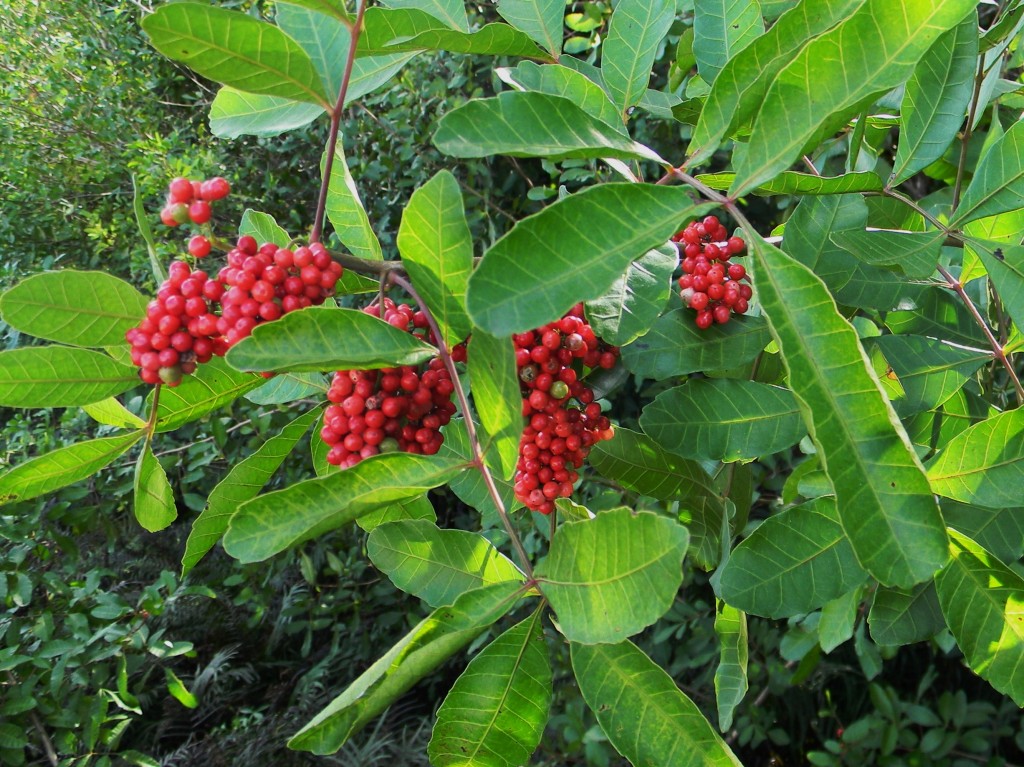Brazilian Pepper
Schinus terebinthifolius
Plant Family: Anacardiaceae
Leaves: Alternate, once-compound, winged, to 15 cm, with 5 to 9 lightly toothed elliptic leaflets.
Bark: Light brown and smooth on young trees, fissured on older specimens.
Flowers: Dioecious, small, white, in clusters in the leaf axils; all year, peaking summer to fall.
Fruits: Bright red, in attractive clusters in the leaf axils; eaten and spread by birds; all year, peaking late fall to winter.
Habitat: Found in various habitats, including pinelands, hammocks, coastal areas, and along canal borders; highly invasive.
Growth Form: Shrub to small tree.
Similar Species: Two other south Florida trees might be confused with Brazilian Pepper. Winged Sumac (Rhus copallinum) has 11 to 21 leaflets that are usually not toothed. Soapberry (Sapindus saponaria) usually has an even number of leaflets.
Comments: Brazilian Pepper was first introduced at the end of the nineteenth century by the USDA; this highly invasive species forms dense thickets that crowd out native vegetation. Eradication efforts have met with only limited success. It is no longer legal for arborists to sell this alien species in Florida.

